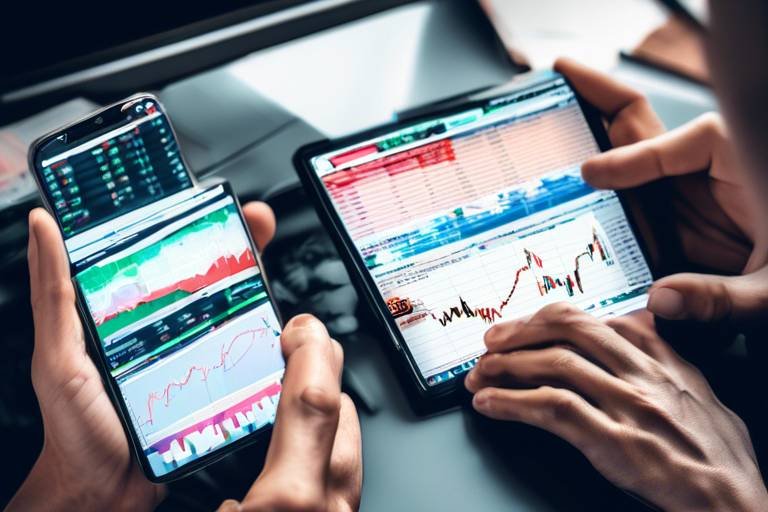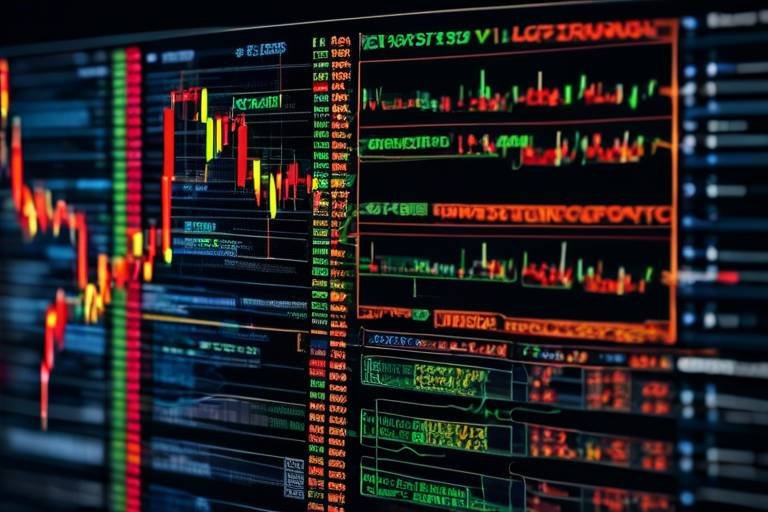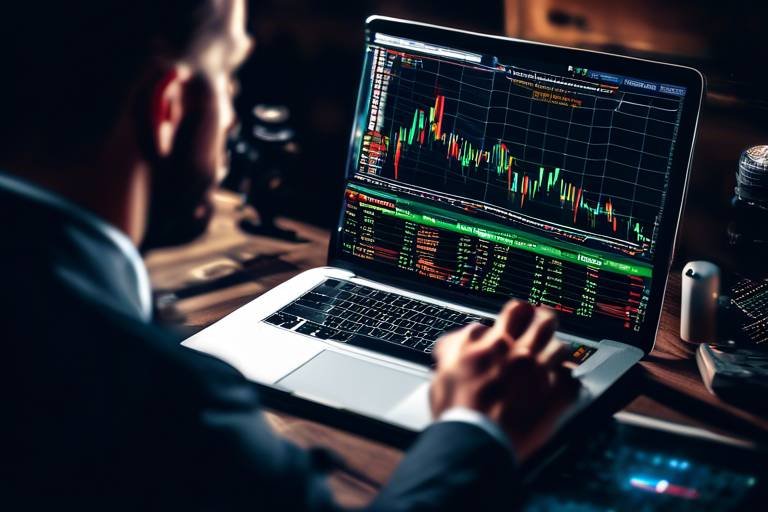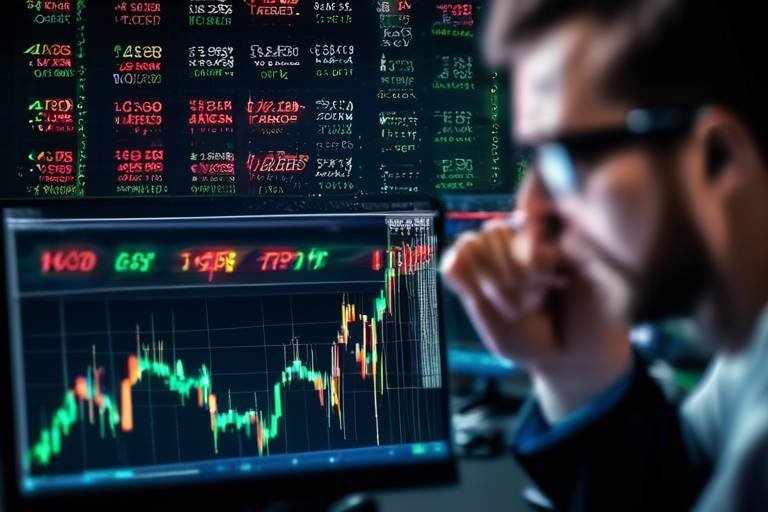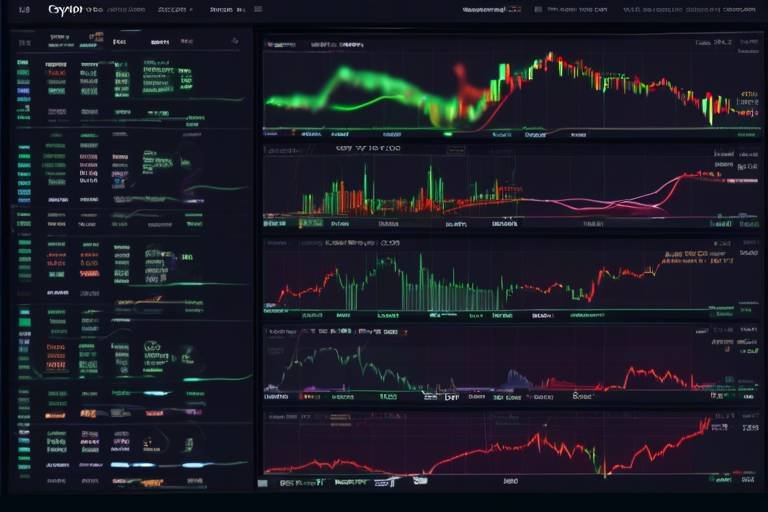Understanding the 80/20 Rule in Crypto Trading
The world of cryptocurrency trading is as thrilling as it is unpredictable. With thousands of coins and tokens available, traders often find themselves overwhelmed by choices and strategies. Enter the 80/20 Rule, also known as the Pareto Principle. This powerful concept suggests that a mere 20% of your efforts can yield a staggering 80% of your results. Imagine a scenario where you could focus on just a handful of strategies or assets that truly make a difference in your trading portfolio. Wouldn’t that simplify your trading experience and potentially boost your profits?
In the context of crypto trading, applying the 80/20 rule means honing in on the most impactful trades and strategies that can drive your success. Instead of spreading yourself too thin across countless investments, you can strategically target the high-impact opportunities that are more likely to yield substantial returns. This approach not only enhances your decision-making but also minimizes the risks associated with trading in a volatile market.
But how exactly can you leverage this principle in your trading activities? It starts with understanding the key elements of your trading strategy, identifying which trades contribute most to your profits, and focusing your efforts on those. By doing so, you’ll not only save time but also optimize your resources, allowing you to make informed decisions that align with your financial goals.
As we dive deeper into this article, we’ll explore practical applications of the 80/20 rule in crypto trading, including how to identify high-impact trades, analyze market trends, and implement effective risk management techniques. By the end, you’ll have a clearer understanding of how to maximize your profits while minimizing risks in the dynamic world of cryptocurrency.
The 80/20 rule, or Pareto Principle, states that 80% of outcomes come from 20% of causes. In crypto trading, this principle can guide traders to focus on high-impact strategies for better results. For instance, think about your trading history: have you noticed that a small fraction of your trades has generated the majority of your profits? This is the essence of the 80/20 rule. By identifying and concentrating on these winning trades, you can significantly enhance your trading performance.
Understanding how to apply the 80/20 rule to trading strategies can significantly enhance decision-making. This section discusses identifying key strategies that yield the most significant returns in the crypto market. It’s essential to analyze your past trades to determine which strategies have worked best for you. By focusing on these successful tactics, you can streamline your trading process and increase efficiency.
Recognizing which trades contribute most to profits is essential. This subsection provides insights on analyzing past trades to pinpoint the most successful strategies and assets in crypto trading. For example, you might find that certain cryptocurrencies consistently outperform others in your portfolio. By dedicating more time and resources to these high-impact trades, you position yourself for greater success.
Analyzing market trends is vital for identifying high-impact trades. This part discusses techniques for assessing market movements and their implications for trading decisions in cryptocurrency. Staying updated on market news, utilizing technical analysis tools, and understanding market sentiment can help you make informed decisions that align with the 80/20 rule.
Effective risk management is crucial for successful trading. Here, we explore how to apply the 80/20 rule in risk assessment to protect investments while maximizing potential gains. By focusing on the trades that yield the highest returns, you can allocate your capital more wisely and minimize exposure to loss. This strategic approach not only safeguards your investments but also enhances your overall trading experience.
This section highlights how traders can focus their efforts on the most profitable aspects of their trading activities, leveraging the 80/20 rule to optimize their time and resources. Imagine being able to spend less time on tedious analysis and more time on executing high-impact trades. This is the beauty of the 80/20 rule—it allows you to work smarter, not harder.
Understanding common pitfalls is essential for successful trading. This section discusses frequent mistakes traders make and how to avoid them by applying the 80/20 rule effectively. By recognizing these errors, you can adapt your strategies to minimize risks and enhance your trading outcomes.
Overtrading can lead to significant losses. This subsection examines the dangers of excessive trading and how focusing on high-impact trades can mitigate these risks. When traders try to capitalize on every market movement, they often end up making impulsive decisions that can harm their portfolios. Instead, by concentrating on the most impactful trades, you can avoid the pitfalls of overtrading.
Neglecting thorough market research can result in poor trading decisions. Here, we emphasize the importance of informed trading and how the 80/20 rule can guide effective research practices. By dedicating your research efforts to the most influential market factors, you can make better-informed decisions that align with your trading goals.
As the crypto market evolves, understanding the future implications of the 80/20 rule becomes essential. This section discusses potential trends and how traders can adapt their strategies accordingly. The crypto landscape is constantly changing, and being able to pivot your focus towards the most promising opportunities will be key to long-term success.
- What is the 80/20 rule in crypto trading? The 80/20 rule suggests that 80% of your results come from 20% of your efforts, encouraging traders to focus on the most impactful strategies.
- How can I identify high-impact trades? Analyze past trading data to determine which trades have yielded the most significant profits and concentrate your efforts on those.
- What are common mistakes in crypto trading? Overtrading and ignoring market research are two frequent pitfalls that can be avoided by applying the 80/20 rule.
- How does risk management fit into the 80/20 rule? By focusing on high-impact trades, you can allocate your capital more effectively and minimize exposure to losses.

What is the 80/20 Rule?
The 80/20 Rule, also known as the Pareto Principle, is a fascinating concept that reveals how a small number of causes often lead to a large portion of the outcomes. It suggests that 80% of results in any given situation can often be attributed to just 20% of the efforts. This principle is not only applicable in business and economics but also holds significant relevance in the world of cryptocurrency trading. Imagine investing countless hours analyzing every single altcoin, yet discovering that a handful of them actually contribute to the majority of your profits. That's the power of the 80/20 Rule in action!
In the context of crypto trading, understanding this principle can be a game-changer. It encourages traders to focus their energy on the high-impact strategies that yield the best results, rather than getting lost in the noise of countless trading signals and market fluctuations. By identifying and concentrating on the 20% of strategies that generate 80% of returns, traders can streamline their decision-making process, enhance their profitability, and significantly reduce the stress associated with trading.
To put it simply, the 80/20 Rule can help traders prioritize their efforts. For instance, rather than spreading themselves thin across multiple assets, they can focus on a select few that have historically shown the highest returns. This approach not only saves time but also minimizes risks associated with over-diversification. As we delve deeper into the world of crypto trading, you'll see how applying this principle can lead to smarter trading decisions and ultimately, greater success.
So, how can you apply the 80/20 Rule to your trading strategy? It starts with analyzing your past trades and recognizing patterns. You might find that a small number of trades have contributed disproportionately to your overall profit. This insight allows you to refine your strategy, placing more emphasis on these high-impact trades while being more selective about your investments. The beauty of this rule lies in its simplicity and effectiveness, making it a vital tool for anyone looking to navigate the often tumultuous waters of cryptocurrency trading.
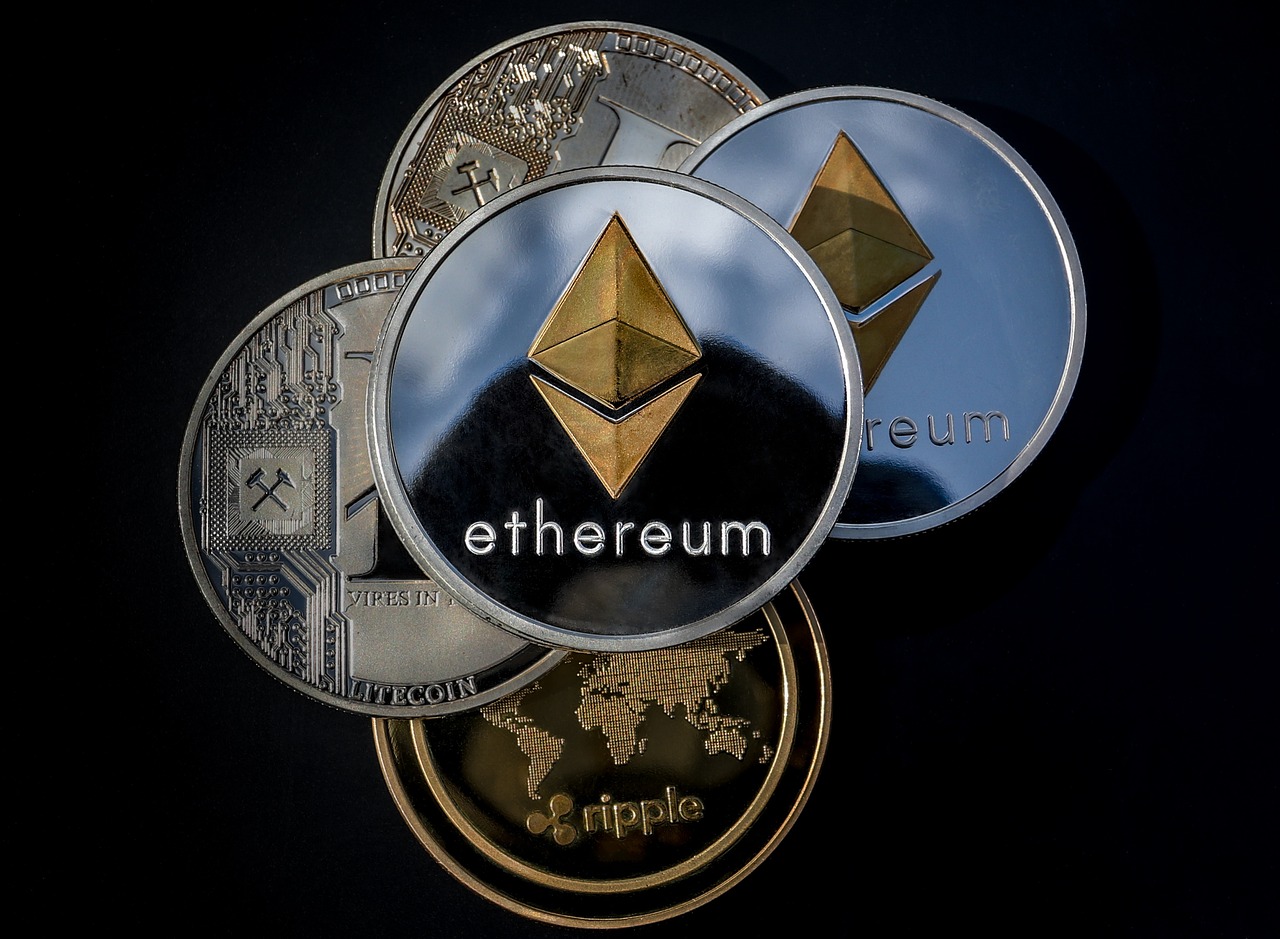
Applying the 80/20 Rule to Trading Strategies
The 80/20 rule, often referred to as the Pareto Principle, serves as a powerful framework for enhancing trading strategies in the dynamic world of cryptocurrency. By honing in on the 20% of strategies that yield 80% of your profits, traders can streamline their approach, reduce unnecessary complexity, and ultimately make more informed decisions. This principle encourages traders to focus their energy on the most impactful actions rather than spreading themselves too thin across a multitude of trades that may not deliver significant returns.
To effectively apply the 80/20 rule to your trading strategies, the first step is to conduct a thorough analysis of your past trades. By reviewing your trading history, you can identify which trades were the most successful and which strategies consistently delivered results. This analysis is akin to mining for gold; you sift through a vast amount of data to uncover the nuggets that truly shine. Look for patterns in your trading behavior, such as specific cryptocurrencies that performed well or particular market conditions that led to successful trades.
Once you've identified these high-impact trades, the next step is to focus your efforts on similar opportunities. For instance, if you find that trading Bitcoin during specific market trends consistently yields profits, you should prioritize those trades. This targeted approach not only enhances your potential for success but also allows you to allocate your time and resources more efficiently. Instead of trying to keep up with every cryptocurrency on the market, you’re honing in on the ones that matter most to your bottom line.
Moreover, the application of the 80/20 rule extends beyond just identifying successful trades. It also involves understanding market trends and employing effective risk management techniques. Analyzing market trends can provide insights into when to enter or exit trades, helping you stay ahead of the curve. For example, if data shows that a particular altcoin tends to surge after a major market event, you can position yourself to capitalize on that trend. This proactive approach can significantly enhance your trading strategy.
In terms of risk management, applying the 80/20 rule means focusing on the 20% of risks that could lead to 80% of your losses. By identifying these critical risks, you can implement strategies to mitigate them. This might involve setting stop-loss orders on high-risk trades or diversifying your portfolio to protect against market volatility. The goal is to create a safety net that allows you to take calculated risks without jeopardizing your entire investment.
In summary, applying the 80/20 rule to your trading strategies can dramatically enhance your performance in the crypto market. By concentrating on the most impactful trades, analyzing market trends, and managing risks effectively, you can optimize your trading efforts and maximize your profits. Remember, it’s not about how many trades you make, but rather the quality and impact of those trades that truly matter.
- What is the 80/20 rule in crypto trading?
The 80/20 rule, or Pareto Principle, suggests that 80% of results come from 20% of efforts. In crypto trading, this means focusing on the most profitable strategies and trades.
- How can I identify high-impact trades?
By analyzing your past trading data, you can pinpoint which trades have historically yielded the best results and focus your efforts on those strategies.
- What are some common risks in crypto trading?
Common risks include market volatility, overtrading, and lack of proper research. Applying the 80/20 rule helps you focus on mitigating the most significant risks.

Identifying High-Impact Trades
When it comes to crypto trading, one of the biggest challenges is figuring out where to focus your efforts. The market is vast, and the options can be overwhelming. However, by applying the 80/20 rule, traders can pinpoint high-impact trades that yield the most significant returns. Imagine sifting through a pile of gold nuggets to find the few that will make you rich. That's the essence of identifying high-impact trades in the volatile world of cryptocurrencies.
To start, it’s crucial to analyze your past trading performance. Take a moment to reflect: which trades brought you the most profit? This analysis will help you identify patterns and strategies that work best for you. You might find that a small percentage of your trades account for the majority of your profits. This realization is the cornerstone of the 80/20 principle in trading.
Moreover, leveraging data analytics can significantly enhance your ability to identify these high-impact trades. Using tools that provide insights into market trends, trading volumes, and price movements can help you make informed decisions. For instance, you can create a trading journal to track your trades and their outcomes. This journal can serve as a valuable resource for understanding which assets and strategies consistently perform well.
| Trade Type | Profit/Loss | Duration | Market Conditions |
|---|---|---|---|
| Bitcoin Long | +$500 | 1 Week | Bullish |
| Ethereum Short | -$200 | 2 Days | Bearish |
| Ripple Long | +$300 | 3 Days | Neutral |
In this table, you can see how different trades performed under various market conditions. By focusing on trades that resulted in significant profits, you can start to identify patterns that may inform your future decisions. For example, if you notice that your Bitcoin longs consistently yield better results during bullish trends, it might be wise to prioritize those trades in similar market conditions.
Additionally, don't underestimate the power of community insights and social trading platforms. Engaging with other traders can provide valuable perspectives and highlight potential high-impact trades you might have overlooked. Sometimes, just like in a treasure hunt, the best clues come from those who have already navigated the terrain.
Ultimately, identifying high-impact trades is about being strategic and focused. By honing in on the trades that truly matter, you can maximize your profits while minimizing the time and effort spent on less fruitful endeavors. Remember, it's not about trading more; it's about trading smart.
- What is a high-impact trade? A high-impact trade is one that yields significant returns compared to the effort and resources invested in it.
- How can I track my trading performance? You can maintain a trading journal or use trading analytics tools to monitor your trades and their outcomes.
- Why is market analysis important? Market analysis helps you identify trends and conditions that can lead to high-impact trades.
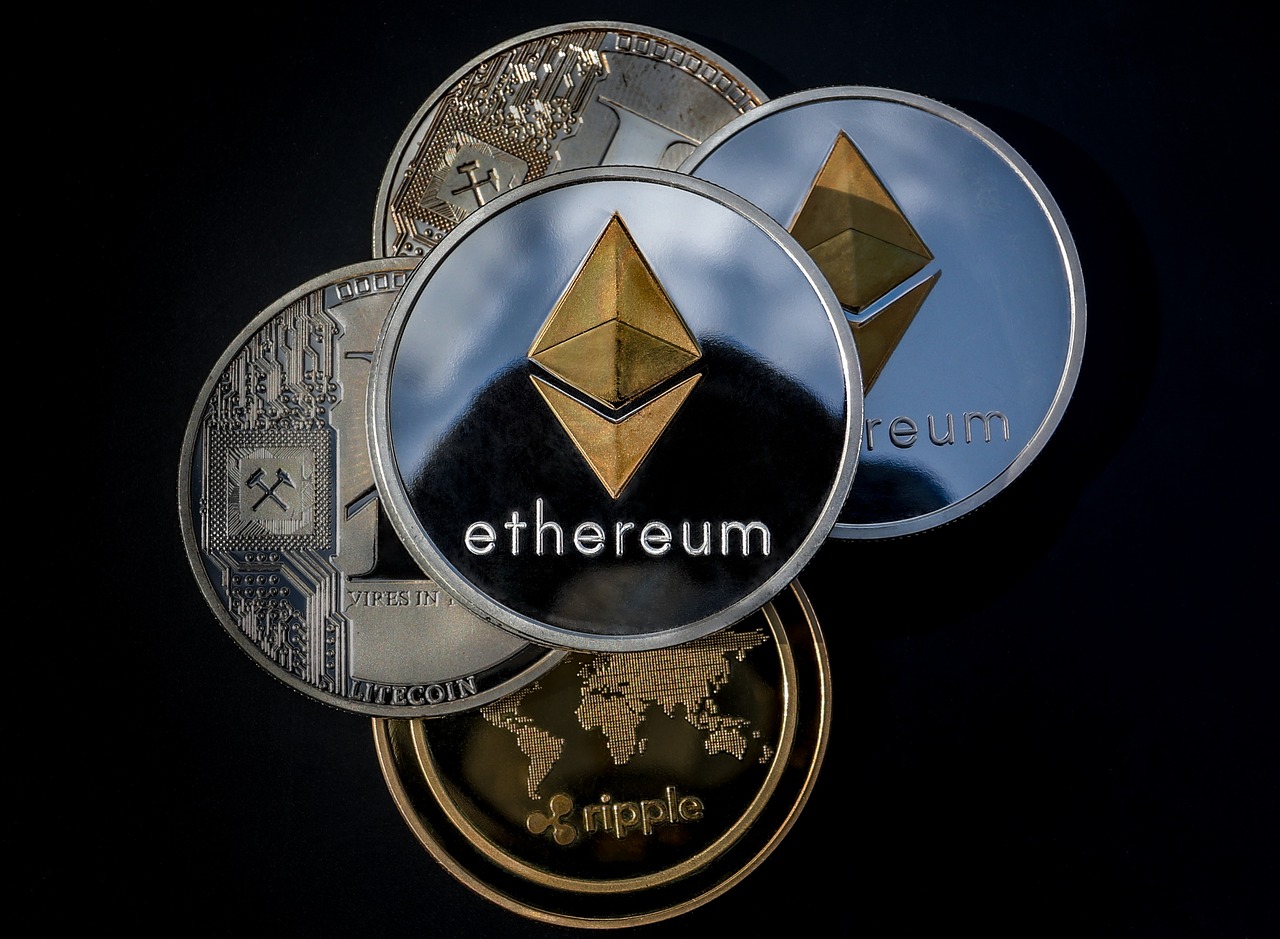
Market Trends and Analysis
Understanding market trends is crucial for any crypto trader looking to leverage the 80/20 rule effectively. Just like a seasoned surfer knows when to catch the perfect wave, a savvy trader must identify the right market movements to maximize their profits. The crypto market is known for its volatility, which means trends can shift rapidly. However, by honing in on key indicators, traders can position themselves to take advantage of these fluctuations.
One of the most effective ways to analyze market trends is through technical analysis. This involves examining price charts, using indicators, and studying historical price movements. For instance, traders often look at moving averages, relative strength indexes (RSI), and volume patterns to gauge market sentiment. By focusing on these high-impact indicators, you can identify potential entry and exit points that could yield significant returns. Remember, the goal is to pinpoint the 20% of indicators that lead to 80% of your results.
Additionally, keeping an eye on news events and market sentiment can provide valuable insights. For example, announcements regarding regulatory changes, technological advancements, or significant partnerships can create ripples in the market. By being aware of these factors, traders can position themselves ahead of the curve. It’s essential to filter through the noise and focus on the news that has the potential to impact the market significantly.
Moreover, utilizing social media platforms and online forums can also be beneficial. Many traders share their insights and analyses on platforms like Twitter and Reddit, which can help you gauge public sentiment and emerging trends. However, it’s important to apply critical thinking and not solely rely on social media for trading decisions. Instead, use it as a supplementary tool to enhance your market analysis.
To illustrate the significance of market trends, consider the following table that summarizes various indicators and their potential impact on trading decisions:
| Indicator | Type | Impact on Trading |
|---|---|---|
| Moving Averages | Technical | Helps identify the direction of the trend |
| RSI | Technical | Indicates overbought or oversold conditions |
| Volume Analysis | Technical | Confirms the strength of a price move |
| News Events | Fundamental | Can cause sudden price movements |
| Social Media Sentiment | Sentiment | Reflects public perception and trends |
In conclusion, by focusing on the most impactful market trends and analysis techniques, traders can significantly enhance their decision-making process. Remember, it’s all about finding that sweet spot where your efforts yield the highest returns. By applying the 80/20 rule in your market analysis, you can streamline your trading strategy and improve your overall performance.
- What is the 80/20 rule in crypto trading?
The 80/20 rule, or Pareto Principle, suggests that 80% of outcomes come from 20% of causes. In trading, this means focusing on the most impactful strategies and trades.
- How can I identify high-impact trades?
By analyzing past trades, market trends, and using technical indicators, traders can pinpoint which strategies yield the best results.
- What role does market analysis play in trading?
Market analysis helps traders understand price movements, market sentiment, and potential entry/exit points, allowing for informed trading decisions.
- How can I avoid common trading mistakes?
By applying the 80/20 rule, traders can focus on high-impact trades and avoid pitfalls such as overtrading or ignoring market research.

Risk Management Techniques
When it comes to crypto trading, understanding is like having a safety net beneath a tightrope. The world of cryptocurrencies can be thrilling, but it’s also fraught with volatility and unpredictability. So, how can traders protect their investments while still aiming for those enticing profits? The answer lies in effectively applying the 80/20 rule to risk management.
First off, it's crucial to identify your risk tolerance. This involves determining how much you are willing to lose on a trade before it affects your overall financial health. By understanding your limits, you can make more informed decisions that align with your personal financial goals. For instance, if you know that losing 5% of your portfolio on a single trade is acceptable, you can set your stop-loss orders accordingly. This simple yet effective practice is part of a broader strategy known as capital preservation.
Another technique involves diversifying your portfolio. Instead of putting all your eggs in one basket, consider spreading your investments across various cryptocurrencies. This not only helps mitigate risks but also allows you to capitalize on different market movements. A well-diversified portfolio might include a mix of established coins like Bitcoin and Ethereum, alongside promising altcoins. This way, even if one asset underperforms, others may compensate for it, keeping your overall portfolio balanced.
Moreover, traders should constantly analyze their trades to identify which strategies yield the best results. This is where the 80/20 rule shines. By focusing on the 20% of trades that generate 80% of your profits, you can refine your approach and allocate your resources more effectively. Keeping a trading journal can be incredibly helpful in this regard. Documenting your trades, including the rationale behind each decision, allows you to look back and learn from your successes and mistakes.
Additionally, employing technical analysis can serve as a robust tool for risk management. By studying price charts, trends, and indicators, traders can make more informed decisions about when to enter or exit a trade. For example, using moving averages or the Relative Strength Index (RSI) can help identify potential reversal points, allowing traders to minimize losses and maximize gains. Remember, the goal is not just to make profits, but to protect your capital along the way.
Finally, consider the importance of setting realistic goals. It’s easy to get swept up in the hype of potential gains, but it’s essential to remain grounded. Setting achievable targets helps keep your expectations in check and reduces the likelihood of making impulsive decisions driven by emotion. By applying the 80/20 rule to your goals, you can focus on the few strategies that truly make a difference in your trading performance.
In conclusion, mastering risk management techniques in crypto trading is not just about avoiding losses; it's about creating a sustainable trading strategy that allows you to thrive in a volatile market. By understanding your risk tolerance, diversifying your portfolio, analyzing your trades, employing technical analysis, and setting realistic goals, you can effectively navigate the complexities of cryptocurrency trading while maximizing your potential for profit.
- What is risk management in crypto trading? Risk management in crypto trading involves strategies and techniques that traders use to minimize potential losses while maximizing profits.
- How can I determine my risk tolerance? Assess your financial situation, investment goals, and how much loss you can comfortably sustain without impacting your lifestyle.
- Is diversification really effective? Yes, diversification helps spread risk across different assets, which can protect your portfolio from significant losses.
- What tools can I use for technical analysis? Common tools include price charts, moving averages, and indicators like the RSI and MACD.

Maximizing Profits with Minimal Effort
In the fast-paced world of cryptocurrency trading, the idea of maximizing profits with minimal effort might seem like a dream. However, by applying the 80/20 rule, traders can streamline their activities and focus on what truly matters. Imagine you're at a buffet; you wouldn’t fill your plate with every dish when you know that only a few will satisfy your hunger. The same principle applies to trading—by focusing on the top-performing assets and strategies, you can savor the rewards without overindulging in unnecessary trades.
To truly harness this principle, it’s essential to identify the high-impact trades that yield the most significant returns. This means analyzing past performance to determine which trades have historically brought in the most profit. For instance, if you’ve noticed that a specific cryptocurrency consistently performs well during certain market conditions, it’s wise to prioritize it in your trading strategy. By concentrating your efforts on these high-impact trades, you can significantly increase your profit margins while reducing the time and energy spent on less productive activities.
Another key aspect of maximizing profits is leveraging technology. Automating your trading strategies can save you considerable time and effort. Various trading bots and algorithms can execute trades based on pre-set criteria, allowing you to focus on strategy development rather than the minutiae of daily trading. Think of it as having a personal assistant who handles the routine tasks, freeing you up to make more strategic decisions that align with your long-term goals.
Additionally, it’s vital to keep an eye on market trends. By staying updated on the latest developments and shifts in the crypto landscape, you can better position yourself to take advantage of profitable opportunities. This might involve subscribing to relevant news sources or using analytical tools that provide insights into market movements. Remember, the goal is to work smarter, not harder. By dedicating your resources to understanding market dynamics, you can make informed decisions that align with the 80/20 rule.
Finally, don’t underestimate the power of networking with other traders. Engaging in discussions with fellow crypto enthusiasts can provide invaluable insights and strategies that you may not have considered. Sharing experiences and tips can help you identify which trades are worth your time and which ones to avoid. In essence, building a community around your trading activities can amplify your success and reduce the effort required to achieve it.
In summary, maximizing profits with minimal effort is not just a fantasy; it’s an achievable goal with the right approach. By focusing on high-impact trades, leveraging technology, staying updated on market trends, and connecting with other traders, you can significantly enhance your trading efficiency. So, the next time you find yourself overwhelmed by the vastness of the crypto market, remember the 80/20 rule and let it guide your trading journey.
- What is the 80/20 rule in crypto trading? The 80/20 rule suggests that 80% of your results come from 20% of your efforts. In crypto trading, this means focusing on the few strategies or assets that yield the most significant returns.
- How can I identify high-impact trades? Analyze your past trades to see which ones have been the most profitable and look for patterns that indicate future success.
- What tools can help in maximizing profits? Trading bots, analytical tools, and market trend analysis platforms can assist in automating trades and providing insights into potential profitable strategies.
- Is networking with other traders beneficial? Yes, sharing experiences and strategies with other traders can provide new perspectives and enhance your trading approach.

Common Mistakes in Crypto Trading
In the fast-paced world of cryptocurrency trading, avoiding common mistakes can be the difference between making a profit and incurring significant losses. Many traders, especially beginners, often fall into traps that could have been easily avoided with a little knowledge and foresight. One of the most prevalent mistakes is overtrading. This occurs when traders execute too many trades in a short period, driven by emotion rather than strategy. Think of it like trying to catch fish in a stormy sea; the more you cast your net, the more tangled and confused you become, leading to fewer catches and greater frustration.
Another significant pitfall is ignoring market research. In the crypto world, where the landscape changes rapidly, neglecting to perform due diligence on market trends, news, and asset analysis can lead to poor trading decisions. It's akin to taking a road trip without a map; you might end up lost and far from your destination. A well-informed trader is a successful trader, and incorporating the 80/20 rule here can mean focusing your research efforts on the 20% of market factors that will yield 80% of your insights.
Moreover, many traders fall victim to the allure of FOMO (Fear of Missing Out). This psychological trap can lead to hasty decisions, such as buying into a cryptocurrency that’s surging purely out of fear of missing potential profits. Instead of following the crowd, it’s crucial to stick to your trading plan and strategy. Remember, just because everyone else is jumping on a bandwagon doesn’t mean it’s the right choice for you.
Additionally, lack of a solid risk management strategy is a mistake that can have devastating effects. Traders often underestimate the importance of setting stop-loss orders or fail to diversify their portfolios. This can lead to catastrophic losses, especially in a volatile market like cryptocurrency. A well-rounded approach that includes risk assessment can help cushion the blow when trades don’t go as planned.
To illustrate these common mistakes further, let’s look at a brief overview:
| Mistake | Description | Consequences |
|---|---|---|
| Overtrading | Executing too many trades in a short time. | Increased fees and potential losses. |
| Ignoring Market Research | Neglecting to analyze market trends and news. | Poor decision-making and missed opportunities. |
| FOMO | Buying based on fear of missing out. | Unplanned trades that may lead to losses. |
| Lack of Risk Management | Failing to set stop-loss orders or diversify. | Significant losses during market downturns. |
By being aware of these common mistakes, traders can better navigate the complexities of the crypto market. Remember, trading is not just about making quick profits; it’s about making informed decisions that lead to long-term success. Embracing the 80/20 rule can help you focus on the most impactful aspects of trading, ultimately leading to a more sustainable approach.
Q: What is the 80/20 rule in crypto trading?
A: The 80/20 rule, also known as the Pareto Principle, suggests that 80% of results come from 20% of efforts. In crypto trading, it means focusing on the most impactful strategies and trades.
Q: How can I avoid overtrading?
A: Set clear trading goals and stick to them. Establish a trading plan that includes entry and exit points to help you avoid impulsive decisions.
Q: Why is market research important?
A: Market research helps traders make informed decisions based on trends and data rather than emotions, reducing the likelihood of poor trading outcomes.
Q: What are some effective risk management techniques?
A: Effective techniques include setting stop-loss orders, diversifying your portfolio, and only investing what you can afford to lose.
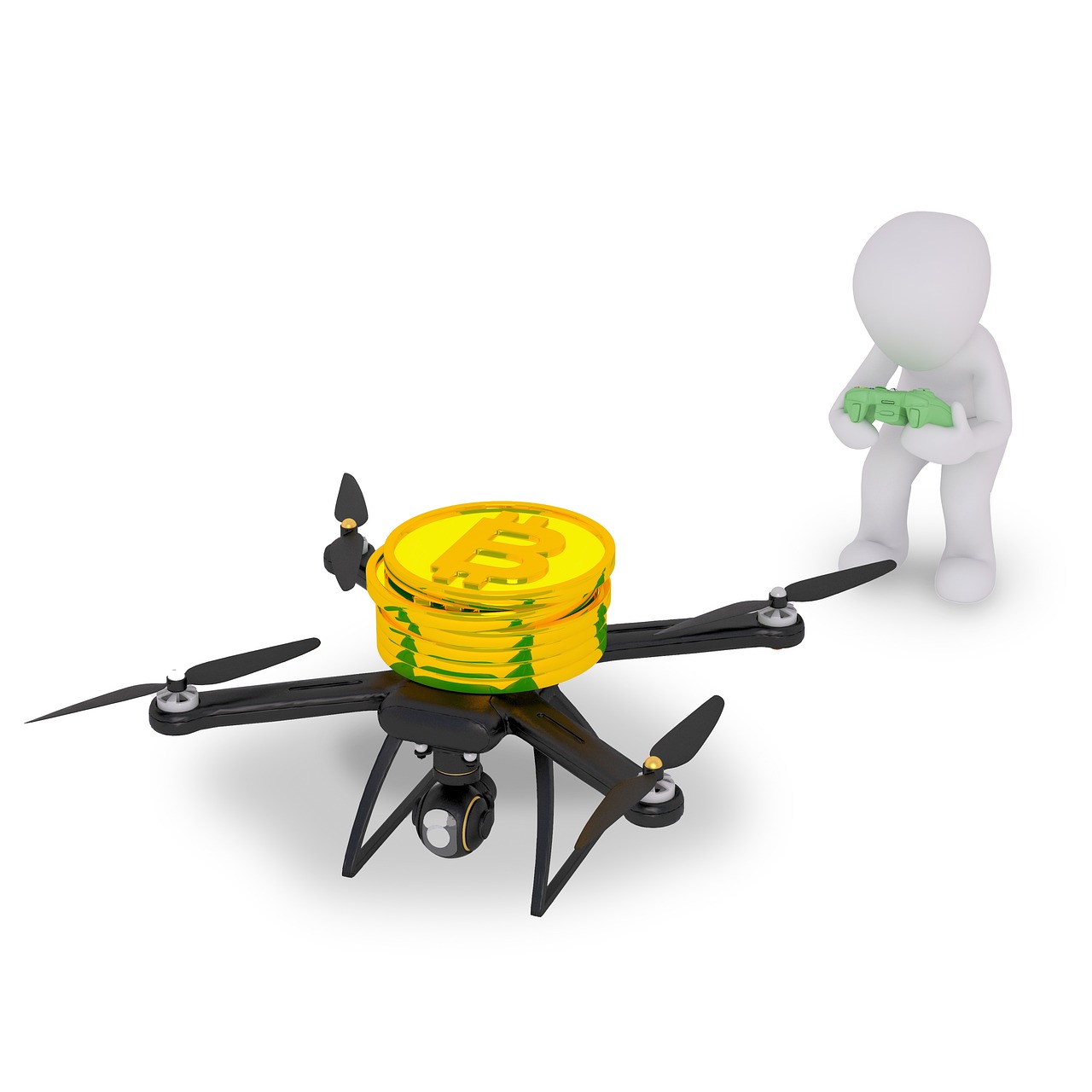
Overtrading and Its Consequences
Overtrading is a common pitfall that many cryptocurrency traders fall into, often leading to disastrous consequences. Imagine being in a candy store, surrounded by a plethora of sweets, and you just can't resist grabbing everything you see. This is how many traders approach the market—they see opportunities everywhere and feel the need to act on every single one. However, just like too much candy can make you sick, overtrading can wreak havoc on your trading account.
The core issue with overtrading is that it often stems from emotional impulses rather than rational decision-making. Traders may feel the pressure to make quick gains, especially in the volatile world of cryptocurrency, where prices can swing dramatically in a matter of minutes. This urgency can lead to a cycle of impulsive trades, where the trader buys and sells without a well-thought-out strategy. As a result, they may end up incurring hefty transaction fees and, more importantly, substantial losses.
To illustrate the consequences of overtrading, consider the following table that outlines the potential impacts:
| Consequence | Description |
|---|---|
| Increased Transaction Costs | Frequent buying and selling can lead to high fees, eating into profits. |
| Emotional Burnout | Constant trading can lead to stress and fatigue, impairing judgment. |
| Missed Opportunities | Focusing on minor trades can distract from larger, more profitable opportunities. |
| Loss of Capital | Ultimately, overtrading can lead to significant financial losses. |
One of the most significant dangers of overtrading is the erosion of your trading capital. When traders make too many trades in a short period, they not only incur transaction fees but also risk making decisions that are not aligned with their overall strategy. This misalignment can lead to a series of losing trades, which can quickly deplete their investment. It's essential to remember that in the world of crypto trading, it's not always about the number of trades you make but the quality of those trades.
Moreover, overtrading can lead to emotional burnout. The constant need to engage in the market can cause traders to feel overwhelmed and stressed, which can impair their ability to make sound decisions. When emotions take the front seat in trading, rational thinking often takes a backseat, and this can lead to a downward spiral of poor choices. Just like a marathon runner needs to pace themselves to avoid exhaustion, traders must learn to set limits and stick to their strategies.
To combat overtrading, traders should focus on the **80/20 rule**. By identifying the 20% of trades that yield 80% of their profits, they can concentrate their efforts on high-impact strategies. This not only reduces the number of trades made but also enhances the potential for greater returns. Setting clear trading goals and sticking to a well-defined plan can help mitigate the urge to overtrade. Remember, it’s not about how many trades you make; it’s about making the right trades.
In conclusion, overtrading can have severe consequences for cryptocurrency traders. By recognizing the signs of overtrading and implementing strategies to focus on high-impact trades, traders can protect their capital and improve their overall trading performance. So, the next time you feel the itch to jump into the market, take a step back and ask yourself: is this trade worth it?
- What is overtrading? Overtrading refers to making too many trades in a short period, often driven by emotional impulses rather than strategy.
- How can I avoid overtrading? Focus on high-impact trades, set clear trading goals, and stick to a well-defined strategy.
- What are the consequences of overtrading? Consequences include increased transaction costs, emotional burnout, missed opportunities, and loss of capital.
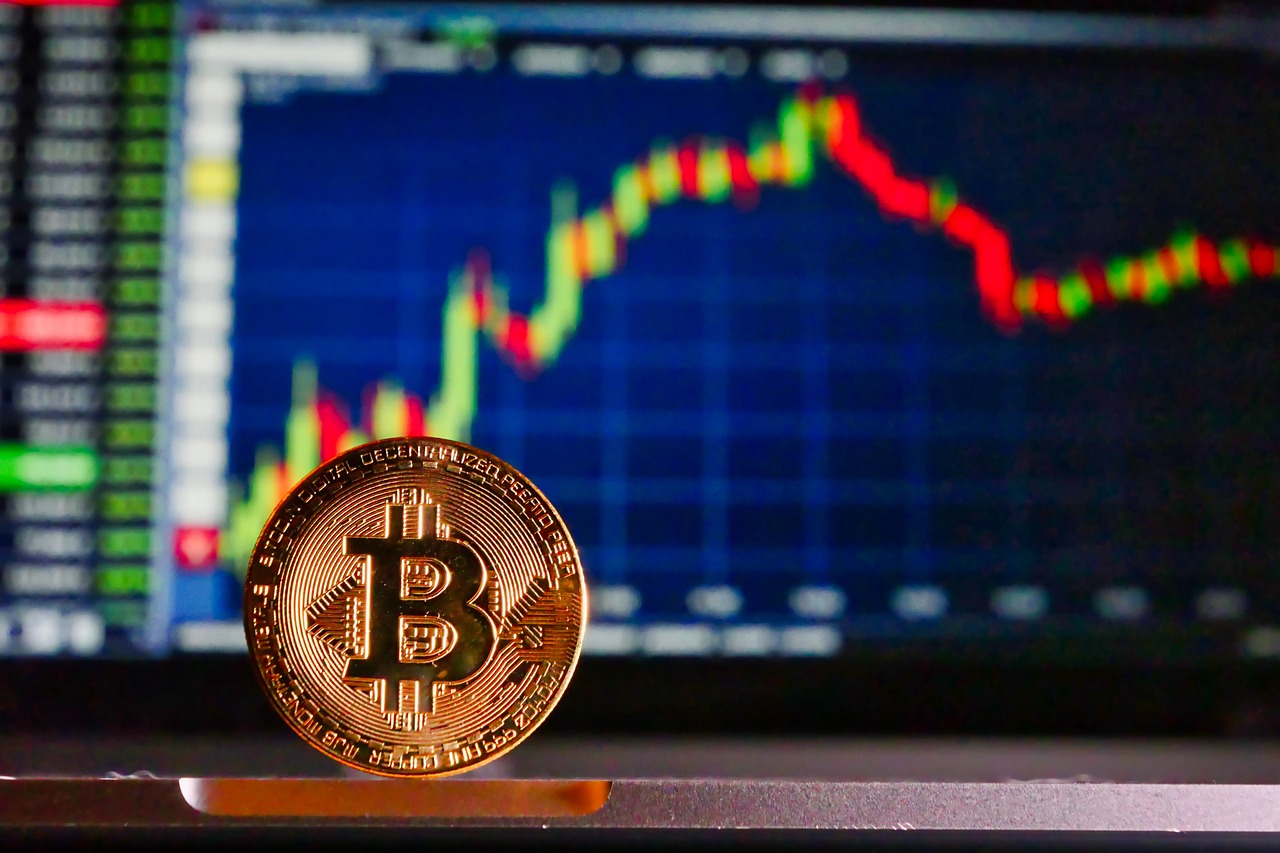
Ignoring Market Research
In the fast-paced world of cryptocurrency trading, one of the most critical elements that traders often overlook is market research. Imagine trying to navigate a dense forest without a map; that’s what trading without proper research feels like. Many traders jump into the market based on gut feelings or hearsay, but this approach can lead to disastrous consequences. The 80/20 rule clearly illustrates that a small percentage of informed decisions can lead to the majority of your profits. So, how can we ensure we’re not falling into the trap of ignorance?
First and foremost, conducting thorough market research allows traders to understand the underlying factors that drive cryptocurrency prices. This includes keeping an eye on market trends, news events, and technological developments. For instance, a major partnership announcement can significantly impact the price of a cryptocurrency. By not staying informed, traders risk missing out on crucial information that could lead to profitable trades.
Moreover, effective research can help traders identify which assets are worth their time and investment. A common mistake is spreading oneself too thin by trying to trade multiple cryptocurrencies without understanding their unique characteristics. Instead, traders should focus on a select few that show the most promise based on thorough analysis. This is where the 80/20 rule comes into play again: by concentrating on the top-performing assets, traders can maximize their returns while minimizing their efforts.
To illustrate the importance of market research, consider the following table that summarizes key components of effective research:
| Research Component | Description | Impact on Trading |
|---|---|---|
| Market Trends | Understanding price movements and patterns over time. | Helps in predicting future price actions. |
| News Analysis | Staying updated with news that affects the crypto market. | Informs traders about potential market shifts. |
| Technical Analysis | Using charts and indicators to forecast price movements. | Enhances decision-making based on data. |
| Community Sentiment | Monitoring social media and forums for trader sentiments. | Provides insights into market psychology. |
By focusing on these key components, traders can significantly improve their decision-making process. Ignoring market research is akin to sailing a ship without checking the weather; it might seem fine at first, but you could easily find yourself in treacherous waters. The right research equips you with the knowledge to make informed trades, which is essential for long-term success.
In conclusion, the importance of market research in cryptocurrency trading cannot be overstated. By applying the 80/20 rule, traders can prioritize their research efforts on the most impactful areas, leading to better trading outcomes. So, before you make your next move in the crypto market, ask yourself: have you done your homework?
- Why is market research important in crypto trading? Market research helps traders make informed decisions, identify profitable opportunities, and mitigate risks.
- How can I conduct effective market research? Focus on analyzing market trends, news events, technical indicators, and community sentiment.
- What are the consequences of ignoring market research? Ignoring research can lead to poor trading decisions, missed opportunities, and potential losses.

Future Implications of the 80/20 Rule in Crypto
The future of cryptocurrency trading is as exciting as it is unpredictable. As the market continues to evolve, the 80/20 rule will play a pivotal role in how traders approach their strategies. Imagine standing at the edge of a vast ocean, where the waves represent countless opportunities and risks. The 80/20 rule serves as your compass, guiding you through the stormy waters of crypto trading. By focusing on the 20% of strategies that yield 80% of the results, traders can navigate this complex landscape with greater confidence.
As we look ahead, we can expect several key trends that will shape the application of the 80/20 rule in crypto. One significant trend is the increasing reliance on data analytics and machine learning. These technologies allow traders to analyze vast amounts of data quickly, identifying the high-impact trades that can lead to substantial profits. By leveraging algorithms that recognize patterns, traders can focus their efforts on the strategies that matter most, effectively applying the 80/20 rule in real-time.
Another implication is the rise of decentralized finance (DeFi). As more traders venture into DeFi, the need for efficient, high-impact trading strategies becomes even more critical. The 80/20 rule can help traders prioritize their investments in projects that have a higher potential for returns. For instance, instead of spreading resources thin across numerous assets, traders can concentrate on the top-performing tokens that historically contribute to most of their profits. This targeted approach not only maximizes gains but also minimizes the risk of loss.
Moreover, the ongoing evolution of regulatory frameworks will also influence how traders apply the 80/20 rule. As regulations become clearer, traders will have a better understanding of which assets and strategies are likely to thrive in a compliant environment. This clarity enables them to focus on the 20% of compliant assets that will generate the most significant returns, ensuring they stay ahead of the curve.
In addition to these trends, education and community involvement will play crucial roles in the future of crypto trading. As more traders share their experiences and strategies, the collective knowledge can help identify the high-impact trades that align with the 80/20 rule. Engaging in community discussions, attending webinars, and participating in forums can provide valuable insights that help traders refine their approaches.
Ultimately, the future implications of the 80/20 rule in crypto trading will revolve around efficiency and focus. By honing in on the strategies that yield the most significant results, traders can optimize their time and resources, leading to more informed decisions and better outcomes. It’s essential to remember that while the crypto market is filled with opportunities, it's the high-impact actions that will truly set successful traders apart from the rest.
- What is the 80/20 rule in crypto trading?
The 80/20 rule, or Pareto Principle, suggests that 80% of results come from 20% of efforts. In crypto trading, this means focusing on the strategies and assets that yield the highest returns. - How can I apply the 80/20 rule in my trading strategy?
By analyzing your past trades, you can identify which strategies have been most successful and concentrate on those to maximize your profits. - What are some common mistakes traders make?
Common mistakes include overtrading and neglecting market research. Applying the 80/20 rule can help avoid these pitfalls by focusing on high-impact trades and informed decision-making. - Will the 80/20 rule still be relevant in the future?
Yes, as the crypto market evolves, the 80/20 rule will remain a valuable tool for traders to streamline their strategies and enhance profitability.
Frequently Asked Questions
- What is the 80/20 rule in crypto trading?
The 80/20 rule, also known as the Pareto Principle, suggests that 80% of your results come from just 20% of your efforts. In the context of crypto trading, this means that a small number of trades or strategies can lead to the majority of your profits. By identifying these key trades, traders can focus their energies where they matter most.
- How can I apply the 80/20 rule to my trading strategies?
To effectively apply the 80/20 rule, start by analyzing your past trades. Look for patterns that show which trades yielded the highest returns. Concentrate on these successful strategies and allocate more resources to them. This focused approach can help you maximize gains while minimizing risks.
- What are some common mistakes traders make?
Many traders fall into the trap of overtrading, which can lead to unnecessary losses. Others may neglect essential market research, resulting in uninformed trading decisions. By applying the 80/20 rule, traders can avoid these pitfalls by focusing on high-impact trades and conducting thorough research before making decisions.
- How can I manage risks while trading?
Effective risk management is crucial in trading. Utilize the 80/20 rule by identifying which trades pose the most significant risks and focusing on those that offer the best potential returns. This means setting stop-loss orders, diversifying your portfolio, and being mindful of market trends to protect your investments.
- What future implications does the 80/20 rule have in crypto trading?
As the crypto market evolves, the 80/20 rule will continue to be relevant. Traders must stay adaptable and ready to identify new high-impact strategies. Keeping an eye on emerging trends and adjusting your approach can help you remain competitive and maximize your trading success.



